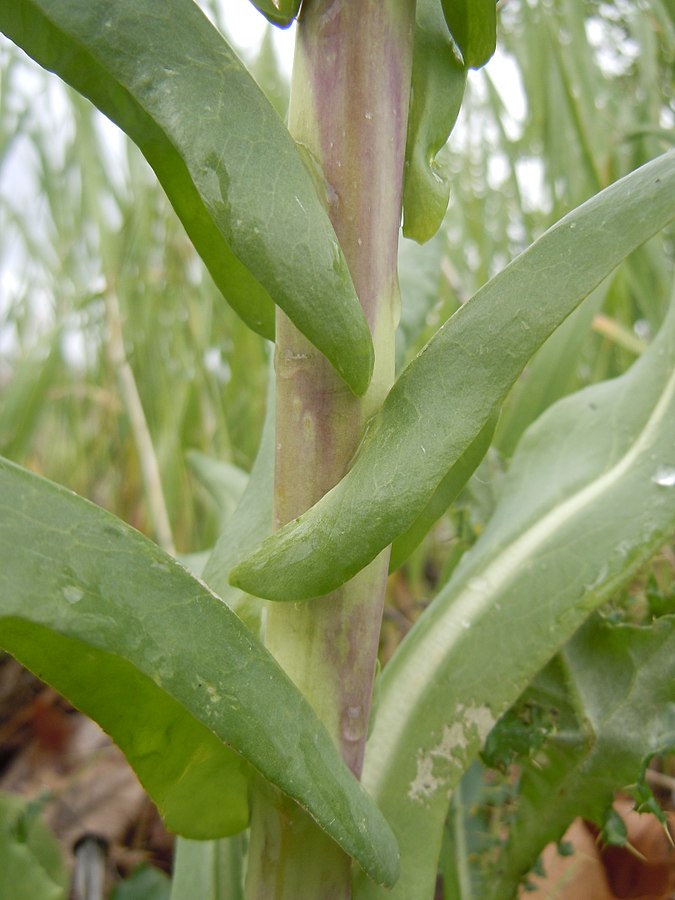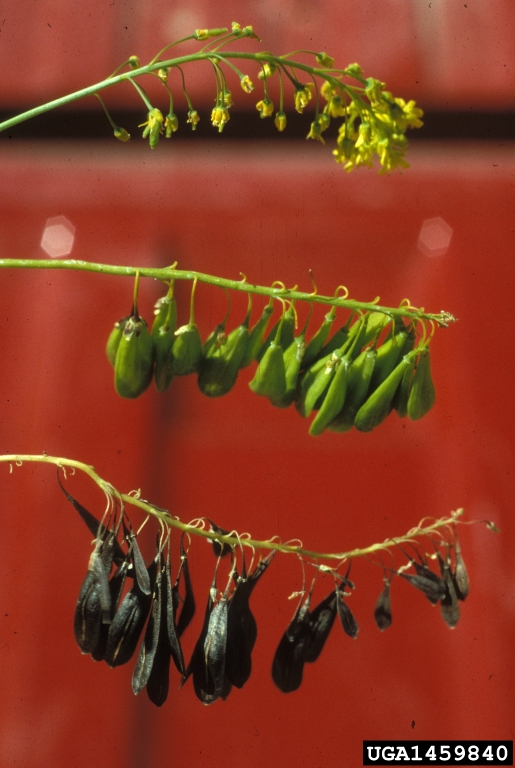Dyer's Woad

Dyer's Woad
(Isatis tinctoria)
Priority: - Prevent / EDRR
Tags: Terrestrial | EDRR
Identification and Reproduction
Identificaton:
- Dyer's woad is a short-lived perennial plant in the mustard family.
- Multiple stems (5-8) will emerge from the same crown. Stems grow erect, semi-woody and can grow up to 1.2 m tall.
- Spends its first year as a rosette, where leaves are stalked, elongated and are usually 4-10cm long.
- Leaves are bluish-green, covered in soft hairs and have a distinct cream-coloured midrib. Upper stem leaves are alternatley arranged, clasping and hairless.
- It produces tiny yellow flowers that are found in dense clusters. Each individual flower is composed of 4 petals in a cross-shape.
- Seedpods are tear-drop shaped, purple-brown and contain 1-2 seeds. Seedpods hang from the end of the stems on short stalks.
Reproduction:
- A single plant can produce 10,000 seeds per year.
- Seeds have a water soluble compound that requires rainwater to help initiate germination and root growth.
Habitat & Ecology
- This plant grows well in moderately fertile, moist yet well-draining soils.
- It prefers full sun sites.
- Dyer's woad thrives on light sandy to gravelly soils but will also grow on rocky soil.
- It often takes over roadsides or gravel pits then slowly spreads into crop, rangelands, agricultural lands, pastures, fields, roadsides and other disturbed sites.
- Seeds can easily float and can establish along sandbars or riverbanks.
Impacts
Social:
- Contaminates alfalfa seed crops.
- Causes loss of crop yields and range production.
- Unpalatable to livestock and will displace forage species.
Ecological:
- An extremely fast-grower, a single infestation can extend and cover up to 40.5ha in two years.
- Major threat to protected habitats.
Management
Prevention is a high priority for this plant.
- Know how to identify this plant for early-detection.
- When leaving an infested site make sure seeds are not attached to clothes, shoes, equipment, pets and vehicles.
- Report any suspected plants.
Resources
Find the Alberta Invasive Species Council's factsheet for Dyer's woad here.
For more details check out the Invasive Species Compendium datasheet on Isatis tinctoria (Dyer's woad).
Header photo (Matt Lavin).





